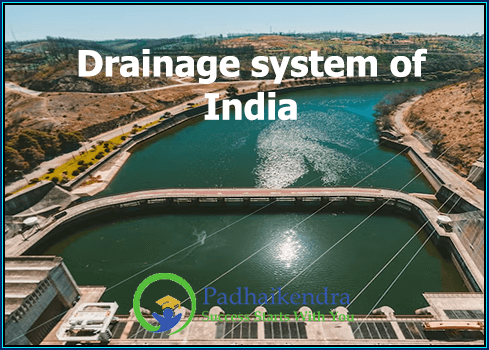The drainage system of India is one of the most important aspects of the country’s geography, and plays a critical role in shaping the environment, economy, and society of the nation. India is home to a complex network of rivers, lakes, and wetlands that form the backbone of its drainage system.
The Indian drainage system can be broadly classified into two main categories: the Himalayan drainage system and the Peninsular drainage system.
The Himalayan drainage system consists of the rivers that originate in the Himalayas, the Himalayan rivers are some of the most important and iconic rivers in India, originating in the Himalayan mountain range and flowing through the northern and northeastern parts of the country. These rivers are fed by the melting snow and glaciers of the Himalayas and are known for their pristine waters and breathtaking natural beauty. The Ganges, also known as the Ganga, is the most well-known of the Himalayan rivers. It originates in the Gangotri glacier in Uttarakhand and flows through several states, including Uttar Pradesh, Bihar, and West Bengal, before emptying into the Bay of Bengal. The river is considered sacred by Hindus and is worshipped as a goddess in Indian culture. The Brahmaputra is another important Himalayan river, flowing through Tibet, India, and Bangladesh. It is the only river in the world that flows from east to west and is known for its turbulent waters and majestic scenery. The Indus River, which originates in Tibet and flows through northern India and Pakistan, is also an important Himalayan river. It is one of the longest rivers in Asia and is known for its historical and cultural significance, having played an important role in the development of several ancient civilizations in the region.
While the Peninsular drainage system includes the rivers that flow through the Deccan Plateau and the coastal regions of India. The Peninsular rivers are an important source of water for agriculture, industry, and daily life for the people living in the region. The Godavari is the largest Peninsular river and is often called the Dakshin Ganga, or the South Ganges. It originates in the Western Ghats of Maharashtra and flows through several states, including Andhra Pradesh and Telangana, before emptying into the Bay of Bengal. The river is known for its scenic beauty and is considered a holy river by Hindus. The Krishna is another important Peninsular river, flowing through the states of Maharashtra, Karnataka, and Andhra Pradesh before emptying into the Bay of Bengal. The river is an important source of irrigation and is home to several important dams and reservoirs. The Cauvery, originating in the Western Ghats of Karnataka, is an important Peninsular river that flows through the states of Tamil Nadu and Karnataka. It is known for its cultural and historical significance, with several ancient temples and pilgrimage sites located along its banks. Other important Peninsular rivers include the Narmada, which flows through the states of Madhya Pradesh, Maharashtra, and Gujarat, and the Tapti, which flows through the states of Maharashtra, Gujarat, and Madhya Pradesh.





